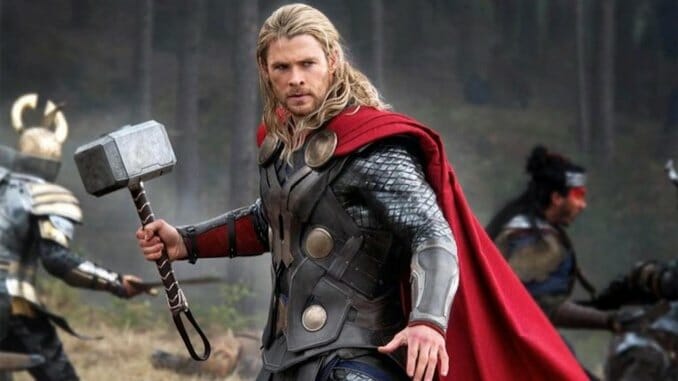Chris Hemsworth Brings the Hammer Down

Chris Hemsworth didn’t start his career playing Odin’s favorite son in 2011’s Thor, but for all intents and purposes, Thor is the moment when he fully became “Chris Hemsworth.” Prior to signing his image away to Kevin Feige, the towering Aussie demigod had already played figures of mythic proportion and consequence: King Arthur in the fantasy series Guinevere Jones, and James Tiberius Kirk’s jawsome father in J.J. Abrams’ 2009 Star Trek reboot. But in the popular consciousness your career is only as old as the role that vaults you into—and over the course of seven blockbuster films, keeps you in—the spotlight in the first place. Before Hemsworth played Thor, had he really played anyone at all?
Yes. Yes he had. But none of his pre-Thor roles seem to matter that much compared to Thor itself, especially when, a decade later, sporting spandex, capes and cool-ass armor in the Marvel Cinematic Universe is a one-way ticket to instant visibility and brand recognition. Though Hemsworth starred in A Perfect Getaway and Ca$h, and appeared in Star Trek, Guinevere Jones and Home and Away, he was nonetheless a nobody until he was deemed worthy of Mjolnir, and then he became somebody.
-

-

-

-

-

-

-

-

-

-

-

-

-

-

-

-

-

-

-

-

-

-

-

-

-

-

-

-

-

-

-

-

-

-

-

-

-

-

-

-








































